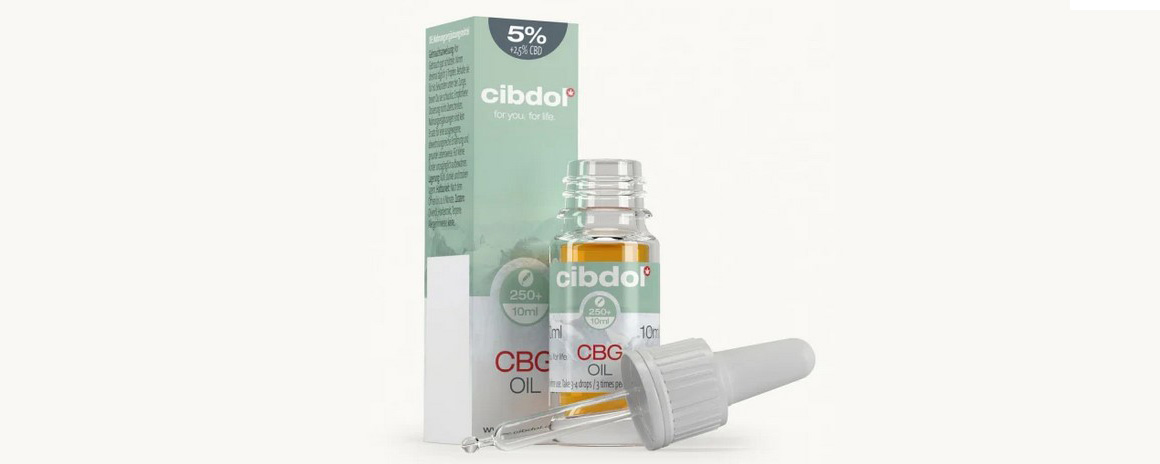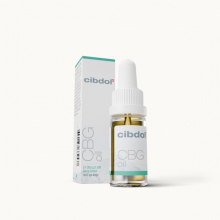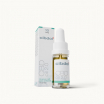Is CBG stronger than CBD?
Published:
With growing interest in hemp's health potential, two cannabinoids often compared are CBD (cannabidiol) and CBG (cannabigerol). Many wonder how they stack up and whether one is "stronger" than the other overall.
Contents:
This article provides a detailed comparison of CBG vs CBD in terms of potency, pharmacological effects, safety, and more. Read on for a full breakdown of how these trendy cannabinoids differ.

An Introduction to CBD and CBG
First, a quick overview of CBD and CBG. Both are non-intoxicating cannabinoids produced in the resin glands of hemp and cannabis plants.
CBD is short for cannabidiol, which is the second most abundant cannabinoid behind THC. Thanks to substantial research on its benefits, CBD has become extremely popular in wellness and health circles.
Meanwhile, CBG stands for cannabigerol. Unlike CBD, CBG is considered a minor cannabinoid because most varieties of cannabis contain very little CBG content. However, specialty cultivation techniques have led to high-CBG strains that enable concentrated CBG oil production.
Early studies suggest both CBD and CBG offer promising effects, but they differ in some key ways. Let's compare these differences to evaluate if one is truly "stronger."
Assessing and Comparing Potency
When evaluating if CBG or CBD is stronger, the first consideration is potency - meaning the concentration or percentage of each compound typically found in hemp and cannabis plants.
- Typical CBD levels: Most cannabis varieties contain CBD levels ranging from trace amounts to around 15-20% CBD by dry weight. However, specialized breeding can yield CBD-dominant strains exceeding 20% CBD.
- Typical CBG levels: In most strains, CBG occurs in percentages below 1% by dry weight. But new CBG-specific breeding results in varietals yielding 10-15% CBG in some cases.
So in terms of natural potency, CBD has much higher total concentrations in typical cannabis compared to trace CBG levels. But potency comes down to the specific strain and cultivation methods. With specialty breeding, CBG can reach moderately high potencies as well.
However, when extracted and concentrated into oils and isolates, both CBD and CBG can reach very high purity levels of up to 99% through careful processing. So potency in the final products ultimately depends on the manufacturer’s methods.
In summary, while CBD dominates potency in most strains, advanced breeding and extraction technologies can result in oils and isolates with comparable purity and potency. But CBG has yet to reach the ultra-high potencies exceeding 50-60% that some CBD product manufacturers achieve.
Comparing Pharmacological Effects
Beyond just potency, pharmacological effects determine the true strength and benefits of cannabinoids. So which effects seem most potent based on research for CBD vs CBG?
Analgesic (Pain-Relieving) Effects
Both CBD and CBG exhibit the ability to temporarily reduce pain and inflammation through various mechanisms. However, studies find CBG has up to 10 times higher affinity for CB2 receptors involved in regulating pain compared to CBD. This suggests CBG may provide more powerful analgesic and anti-inflammatory effects.
Neuroprotective Effects
CBG also appears more potent in terms of protecting nerve cells and brain function compared to CBD based on superior antioxidant and anti-inflammatory effects in regions like the hippocampus. However, CBD still provides robust neuroprotection as well.
Anxiolytic (Anti-Anxiety) Effects
For reducing anxiety, CBD has more direct clinical research demonstrating potent anti-anxiety benefits. However, CBG modulates similar brain signaling involved in anxiety. More studies comparing CBG and CBD head-to-head would further inform relative potency for anxiety relief.
Antimicrobial Effects
Both CBG and CBD exhibit antibacterial, antiviral, antifungal and other antimicrobial properties. But thus far, studies consistently rate CBG as superior for inhibiting growth of harmful pathogens like MRSA when applied topically.
In summary, while CBD certainly provides powerful effects as well, CBG appears more pharmacologically potent in certain areas like analgesia, neuroprotection, and antimicrobial properties based on preliminary evidence thus far.
Comparing Safety and Side Effects
Safety and side effect risks are also important markers of strength. A cannabinoid can be highly potent yet still produce significant adverse effects. So which is safer in terms of potential downsides?
- Human and animal studies report CBD is very well tolerated with few side effects at appropriate doses. Occasional side effects may include fatigue, diarrhea, and changes in appetite and weight.
- Similarly, research shows CBG also has a highly favorable safety profile with minimal adverse effects documented. Some users report occasional tiredness, gastrointestinal distress, or dry mouth.
Overall, both CBD and CBG appear very safe for human consumption according to current data. Neither cannabinoid seems to convey high risks of side effects or overdose. Long-term studies are still needed, but most evidence suggests both are relatively low risk for healthy adults.
Determining Which Cannabinoid is "Stronger" Overall
Based on potency, pharmacological effects, and safety profiles analyzed here, can we conclude if CBG or CBD is stronger overall?
The answer is complicated. In certain areas, studies suggest CBG is more potent - particularly for reducing pain and inflammation, protecting the brain and nerves, and fighting harmful bacteria.
However, CBD has greater clinical research backing its effects for issues like anxiety, seizures, psychosis, nausea, and migraines. It also comprises a larger percentage of most cannabis plants.
Ultimately, it depends on what effects you are looking for. Both offer unique benefits that can be considered "strong" in different therapeutic contexts. For wide-ranging benefits, the two cannabinoids likely work best together thanks to the entourage effect.
Rather than comparing strengths or pitting them against each other, it may be most helpful to think of CBD and CBG as complementary compounds that can enhance one another's effects when combined thoughtfully.
Is CBG stronger than CBD? Conclusion
- While CBD typically occurs in higher concentrations in cannabis, advanced breeding and extraction can result in CBG oils and isolates with similar purity and potency.
- For analgesic, neuroprotective, and antimicrobial effects specifically, studies suggest CBG may be more potent based on affinity for channels involved in these actions.
- Both CBD and CBG appear extremely safe for human use with minimal side effect risks according to available data.
- It's difficult to label one cannabinoid as universally "stronger" since potency depends on the desired effects.
- CBD and CBG likely work best together, providing complementary benefits that enhance overall therapeutic potential.
- More human research is still needed to fully elucidate the unique effects and proper applications of each compound.
In closing, comparing the overall strength of multi-faceted compounds like CBD and CBG is challenging. Rather than pitting them against each other, harnessing their synergy likely provides the most powerful results. Careful analysis of your specific needs and priorities allows you to determine which cannabinoid(s) align best.
Resources used to write this article
- Borrelli, F., Pagano, E., Romano, B., Panzera, S., Maiello, F., Coppola, D., De Petrocellis, L., Buono, L., Orlando, P., & Izzo, A. A. (2014). Colon carcinogenesis is inhibited by the TRPM8 antagonist cannabigerol, a Cannabis-derived non-psychotropic cannabinoid. Carcinogenesis, 35(12), 2787-2797. https://doi.org/10.1093/carcin/bgu205
- Maione, S., Piscitelli, F., Gatta, L., Vita, D., De Petrocellis, L., Palazzo, E., de Novellis, V., & Di Marzo, V. (2011). Non-psychoactive cannabinoids modulate the descending pathway of antinociception in anaesthetized rats through several mechanisms of action. British journal of pharmacology, 162(3), 584–596. https://doi.org/10.1111/j.1476-5381.2010.01063.x
- Morales, P., Hurst, D. P., & Reggio, P. H. (2017). Molecular Targets of the Phytocannabinoids: A Complex Picture. Progress in the chemistry of organic natural products, 103, 103–131. https://doi.org/10.1007/978-3-319-45541-9_4
- Russo E. B. (2011). Taming THC: potential cannabis synergy and phytocannabinoid-terpenoid entourage effects. British journal of pharmacology, 163(7), 1344–1364. https://doi.org/10.1111/j.1476-5381.2011.01238.x
- Ibeas Bih, C., Chen, T., Nunn, A. V., Bazelot, M., Dallas, M., & Whalley, B. J. (2015). Molecular Targets of Cannabidiol in Neurological Disorders. Neurotherapeutics : the journal of the American Society for Experimental NeuroTherapeutics, 12(4), 699–730. https://doi.org/10.1007/s13311-015-0377-3
















